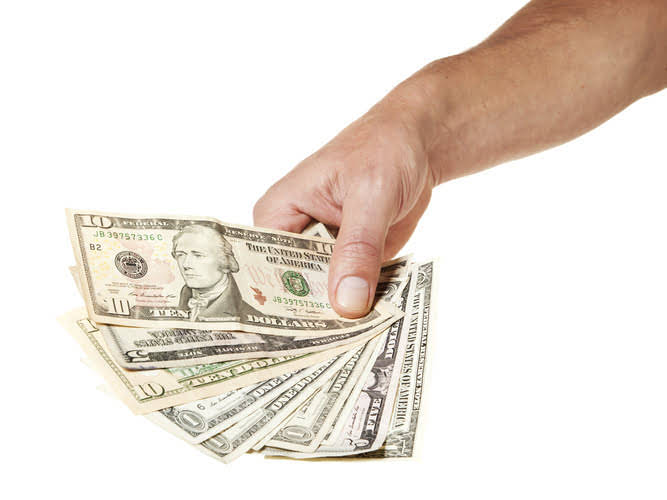
Liquidation value is usually lower than book value but greater than salvage value. The assets continue to have value, but they are sold at a loss because they must be sold quickly. Company A purchases a machine for $100,000 with an estimated salvage value of $20,000 and a useful life of 5 years.
How to Determine Residual Percentages on Depreciation?

Charlene Rhinehart is a CPA , CFE, chair of an Illinois CPA Society committee, and has a degree in accounting and finance from DePaul University. It is the anticipated value of the asset, considering elements such as depreciation, age-related deterioration, and becoming outdated. Salvage value is the projected worth of an asset when it has completed its useful cycle or is no longer being utilized.
Cash Flow After Taxes (CFAT): Definition, Formula, and Example

Each year, the depreciation expense is $10,000 and four years have passed, so the accumulated depreciation to date is $40,000. If the residual value assumption is set as zero, then the depreciation expense each year will be higher, and the tax benefits from depreciation will be fully maximized. See the screenshot below for the facts of the asset we will depreciate using the variable-declining balance for the MACRS half-year convention. The car salvage value calculator is going to find the salvage value of the car on the basis of the yearly depreciation value. Deskera can also help with your inventory management, customer relationship management, HR, attendance and payroll management software. Deskera can help you generate payroll and payslips in minutes with Deskera People.
Straight-Line Method
- This could be because residual value impacts the depreciation schedule of an enterprise.
- Salvage value is a concept that holds significant importance in the world of business.
- The double-entry record will be auto-populated for each sale and purchase business transaction in debit and credit terms.
- Starting from the original cost of purchase, we must deduct the product of the annual depreciation expense and the number of years.
- CPAs piloting their own accounting practices share their challenges, successes, and lessons learned.
- Several factors can influence residual value estimation, including the asset’s condition, technological advancements, market demand, and the expected useful life.
- We often observe a confusion around the terms Salvage Value, Scrap Value and Residual Value.
This means that of the $250,000 the company paid, the company expects to recover $40,000 at the end of the useful life. Unless there is a contract in place for the sale of the asset at a future date, it’s usually an estimated amount. Useful life is the number of years your business plans to keep an asset in service. It’s just an estimate since your business may be able to continue using an asset past its useful life without incident. Hence, a car with even a couple of miles driven on it tends to lose a significant percentage of its initial value the moment it becomes a “used” car.
Example of salvage value calculation for a car belonging to a business for after and before tax
You’re faced with the decision of whether to sell it or keep it until it becomes obsolete. To make an informed choice, you need to calculate the after-tax salvage value of the equipment, which will significantly impact your company’s financial statements and tax liabilities. This guide aims to demystify the after tax salvage value formula concept of after-tax salvage value, illustrating its importance in financial decision-making and providing a step-by-step process to calculate it accurately. In summary, understanding salvage value helps businesses make informed decisions about investments, replacement cycles, and financial planning.

Investors can use after-tax salvage value calculations to assess the profitability of investments and the potential return on asset sales. The applicable tax rate on the gain from the asset sale significantly impacts the after-tax salvage value. If the market is saturated with similar assets, the salvage value may be lower due to decreased demand. Conversely, if there is high demand for a particular type of asset, the salvage value may increase. The condition of the asset is an essential factor in determining its salvage value. An asset in good condition is likely to have a higher salvage value compared to one that is damaged or in poor condition.
Determine The Depreciation Rate
- Understanding salvage value is significant as it influences various financial decisions regarding asset management and depreciation.
- Briefly, suppose we’re currently attempting to determine the salvage value of a car, which was purchased four years ago for $100,000.
- The depreciable amount is then determined by subtracting the salvage value from the asset’s cost.
- The salvage price of the asset and scrap value calculation are based on the original price and depreciation rate.
Map out the asset’s monthly or annual depreciation by creating a depreciation schedule. You must remain consistent with like assets; if you have two fridges, they can’t be on different depreciation methods. Be careful not to https://www.bookstime.com/ consider a similar asset’s asking price since, in most used-asset markets, things will sell below their asking price. Say you’ve estimated your 2020 Hyundai Elantra to have a five-year useful life, the standard for cars.
It is also known as scrap value or residual value, and is used when determining the annual depreciation expense of an asset. The value of the asset is recorded on a company’s balance sheet, while the depreciation expense is recorded on its income statement. Calculating depreciation with consideration of the salvage value ensures that the asset’s cost is accurately spread over its useful life. This provides a true reflection of the asset’s value and helps in presenting a more accurate financial position of the company. It is is an essential component of financial accounting, allowing businesses to allocate the cost of an asset over its useful life. One method of determining depreciation involves considering the asset’s salvage value.

Deduct Depreciation from Original Value
- You can find the asset’s original price if the salvage price and the depreciation rate are known to you with the salvage calculator.
- It is expected to stay economical for 5 years after which the company expects to upgrade to a more efficient technology and sell it for $30 million.
- However, the straight line method does not accurately reflect the difference in usage of an asset and may not be the most appropriate value calculation method for some depreciable assets.
- Salvage value and depreciation are both accounting concepts that are related to the value of an asset over its useful life.
- The straight-line method is a commonly used approach for calculating depreciation by evenly spreading the decrease in an asset’s value over its useful life until it reaches its salvage value.
Different industries have different levels of capital intensity and thus different levels of depreciation. Salvage value, also known as residual value or scrap value, is a fundamental concept in accounting and asset management. It refers to the estimated value that an asset will have at the end of its useful life. This figure is critical for businesses as it plays a key role in several financial processes, including the calculation of depreciation, asset replacement planning, and overall financial strategy.

Download the Straight Line Depreciation Template
By considering these factors, you can make informed decisions about the residual value of your assets. When an asset or a good is sold off, its selling price is the salvage value if tax is not deducted then this is called the before tax salvage value. You can find the asset’s original price if the salvage price and the depreciation rate are known to you with the salvage calculator. Enter the original value, depreciation rate, and age of asset in tool to calculate the salvage value. Lease residual value provides an estimate of the value of the leased vehicle at the end of the lease. It is calculated by considering the original price of the vehicle as well as the effect of depreciation on it.